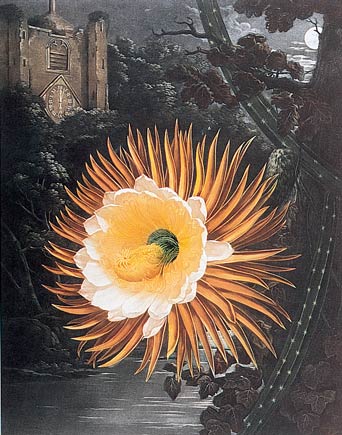
This Article From Issue
January-February 1998
Volume 86, Number 1
DOI: 10.1511/1998.17.0
Science and the Perception of Nature: British Landscape Art in the Late Eighteenth and Early Nineteenth Centuries. Charlotte Klonk. 198 pp. Yale University Press, 1996. $57.50.
The title, which suggests images of the rise of geology and botany as rigorous sciences, combined with the clear identification that this is a book of art history, raises hopes of insights into the development of science from rather new perspectives. How well are these hopes met? Clearly this is an academic art history work, not a scientific treatise. As with any discipline, art history has its own distinct and specific paradigms for information presentation, and therefore the structure and approach may be unfamiliar and perhaps even initially off-putting to those used to the more scientific approaches, diverse as they may be. Nevertheless, this is ultimately a fully documented, closely argued work of the type with which we are all familiar.

From Science and the Perception of Nature.
The central thesis of the work is that during the interval between about 1750 and 1850 the perception of nature changed from a subjective perspective, in which one saw exhibited a preordained order, to a much more objective one, albeit refracted through the eyes of the beholder. This thesis is pursued throughout the book's four sections. The first section sets the scene by providing a general assessment of the philosophy, aesthetics and physiology of the times. The major focus is on the debate concerning the connection between the aesthetic objects being depicted and the person perceiving the result. Why are some views picturesque, whereas others are awesome or even sublime? Is the distinction associated with the nature of light, the optics of the eye or the physical operation of the brain, or is it a culturally conditioned response? Although the author threads her way carefully through the many debates that were raging at the time, no clear conclusions emerge. Ultimately this section is the least satisfying of the work, probably because the focus on the art itself is lost.
This is certainly not the case in the second section, which deals with the links between the visual arts and the science of botany. Here the focus is on the creation and publication of Robert Thornton's The Temple of Flora, a set of plates by "... all the most eminent English artists," which Thornton designed to illustrate his account of the Linnean system. Klonk convincingly demonstrates that when Thornton originally conceived the idea in 1797, it was based on an already outmoded aesthetic, because the various plants, although accurately depicted, were placed in background landscapes inappropriate in vegetation and scale. By the time Thornton's plates were ready for publication some 10 years later, his approach was unacceptable, and therefore the whole enterprise was a failure.
The objective view of landscape that was acceptable in the early years of the 19th century is explored in the third section. Klonk approaches it through an analysis of a set of illustrations relating to the geology of western Scotland. Particular attention is given to the Island of Staffa, where Fingal's Cave was a major tourist attraction. The cave's origin was also a cause of debate among geologists—the vulcanists asserted that it resulted from volcanic activity, whereas the neptunists maintained that the rocks were precipitated from a universal ocean. Both sides used landscape drawings to support their ideas. After reviewing numerous documents, Klonk suggests that rather few artists (or even geologists) had actually visited the site, and that most geologists were using secondhand accounts and thirdhand drawings. Many of the drawings were lamentably distorted, perhaps willfully so, in order to support one side of the debate or the other. Obviously, then as now, a good set of measurements would have solved many problems.
The final section of the book returns to the more general theme of the history of landscape art. It builds on the two previous sections and serves to reinforce the contention that after the turn of the 19th century, art became more objective. Although it centers on the circle of artists around the Varley brothers in London, a variety of areas and landscape types are investigated. The objectivity of observation inevitably led to more accurate depiction of particular places, and it is plausibly postulated that this enhanced the development of the natural sciences until the ascendancy of laboratory-based approaches. This postulate is not pursued, and, in fact, it can be seen as an hypothesis best left to natural scientists to test. Indeed, since the current reviewer is a climatologist, the implied challenge can be extended further. The effects of light, and atmospheric conditions in general, were increasingly used to fuse the observations into an aesthetically integrated whole. The influence of this practice on the development of the atmospheric sciences, and indeed the insights still to be gained, demand examination.—Peter Robinson, Geography, University of North Carolina at Chapel Hill
American Scientist Comments and Discussion
To discuss our articles or comment on them, please share them and tag American Scientist on social media platforms. Here are links to our profiles on Twitter, Facebook, and LinkedIn.
If we re-share your post, we will moderate comments/discussion following our comments policy.